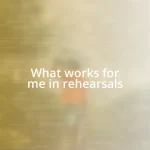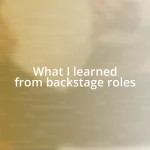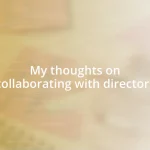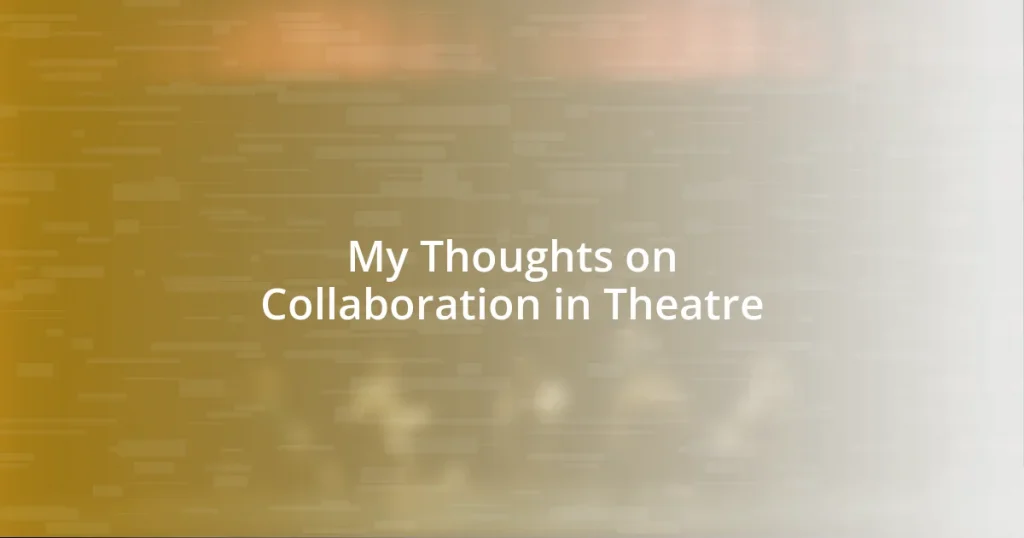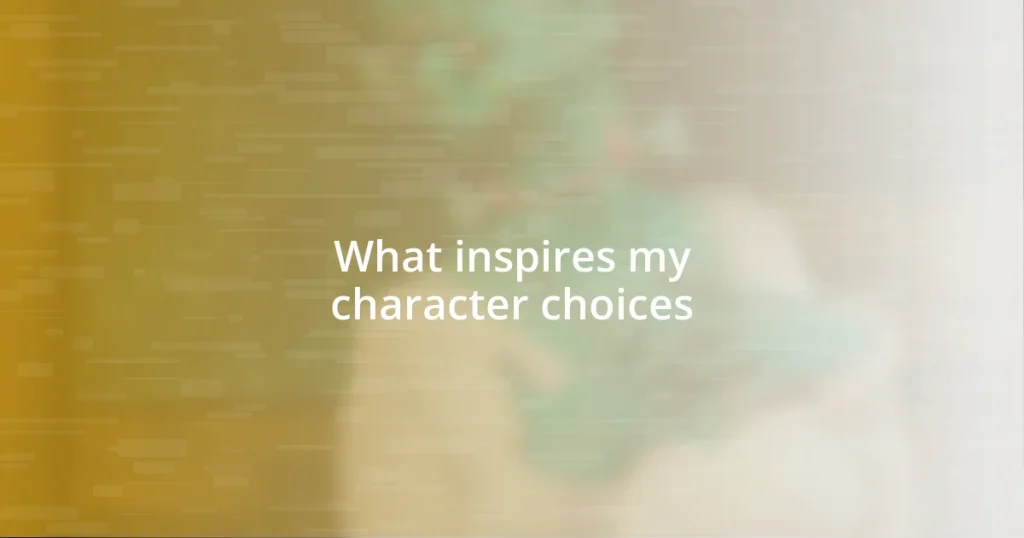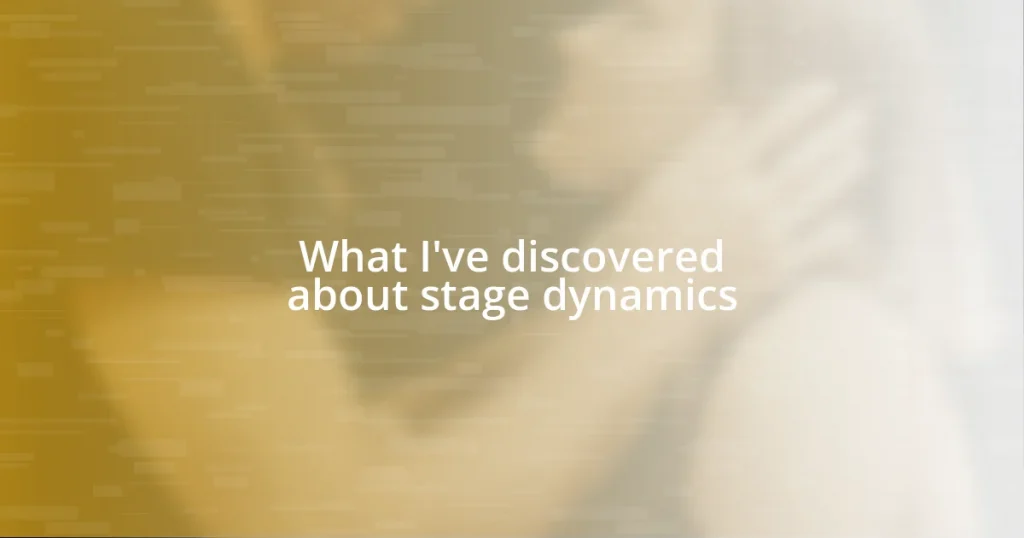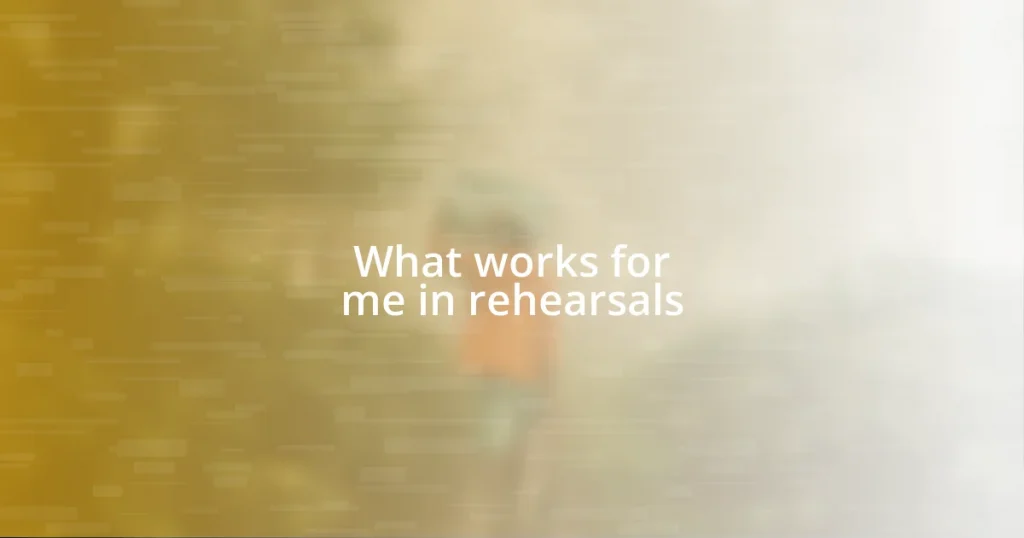Key takeaways:
- Collaboration in theatre enhances creative depth and emotional connection, allowing diverse perspectives to elevate performances.
- Effective communication and trust-building among cast and crew are essential for a harmonious and productive theatrical environment.
- Evaluating successful collaboration involves recognizing the journey and shared ownership of the creative process, fostering adaptability and collective pride.

Understanding Collaboration in Theatre
Collaboration in theatre is like a delicate dance, where each member plays a crucial role in creating something beautiful. I remember a time during a production when the stage manager and I stayed up late to refine the timing of cues. As we shared ideas, I felt a rush of excitement—together we transformed a chaotic moment into a seamless transition. Isn’t it fascinating how just a few perspectives can change the entire narrative?
Moreover, the emotional depth that emerges from teamwork can be truly transformative. I once worked on a project where the actors held a workshop to discuss their characters’ motivations. This open dialogue created a safe space, allowing us to dive deeper into our roles and develop a bond that resonated on stage. Can you imagine how this kind of emotional sharing can elevate a performance?
In my experience, the magic of collaboration lies in the unpredictability of creative minds coming together. I recall a brainstorming session where an unexpected idea from a first-time playwright sparked a unique scene that none of us anticipated. It made me realize that everyone’s voice matters in the process. Don’t you think that embracing such diversity can truly enrich our theatrical journey?

Importance of Teamwork in Theatre
Teamwork in theatre is fundamentally essential, as it hinges on the collective effort of various individuals to create a cohesive production. I remember one rehearsal when I witnessed the lighting designer and the director exchanging thoughts about the mood of a scene. Their collaboration not only altered the aesthetics but also deepened the emotional impact of the performance. It truly exemplified how intertwining different skills can lead to a richer final product.
I’ve also noticed that teamwork fosters a sense of camaraderie among cast and crew. During a challenging rehearsal for a musical, our choreographer encouraged us to share our feelings about the dance numbers. This sharing didn’t just refine our movements; it also built trust, making us all feel united in our goal. When people feel comfortable and valued, it reflects in their performances and creates a stronger connection with the audience.
Furthermore, working closely with others leads to personal growth and learning. In one of my past productions, I found myself paired with a veteran actor who generously shared his techniques and experiences. This mentorship not only improved my craft but also highlighted the importance of nurturing new talent. Isn’t it inspiring how collaboration can transform not just the work at hand, but also the individuals involved?
| Aspect | Importance |
|---|---|
| Collective Creativity | Enhances the depth and richness of a production through diverse perspectives. |
| Camaraderie | Builds trust and emotional connection among cast and crew, leading to better chemistry on stage. |
| Personal Growth | Encourages learning and mentorship, benefiting both seasoned actors and newcomers. |

Roles and Responsibilities in Collaborations
Collaboration in theatre is a tapestry woven from various roles, each with its own responsibilities that contribute to the larger picture. I once had an experience where I was tasked with the costume design while working alongside a brilliant set designer. The way we both shared our visions for the production was enlightening. Balancing aesthetics between costumes and set pieces was challenging, but ultimately, it made the visuals all the more cohesive and impactful.
Here are some key roles and their essential responsibilities in theatre collaborations:
- Director: Guides the overall vision and tone of the production; coordinates all aspects, ensuring everything aligns with the script’s intent.
- Playwright: Creates the script and characters; engages with the cast and crew to ensure the original vision remains intact throughout the production.
- Stage Manager: Organizes and oversees rehearsals, manages schedules, and communicates between the cast and crew, making sure everything runs smoothly during performances.
- Designers (set, costume, lighting): Translate the director’s vision into visual elements, enhancing the storytelling through their specialized artistic contributions.
- Actors: Bring the characters to life; collaborate with the director and each other to develop performances that resonate with the audience.
In my perspective, every person involved brings something unique to the table. I remember an instance where our sound designer created a haunting melody that perfectly underscored a pivotal moment in the play. It was incredible to see how sound could elevate what we were already doing on stage. It reminded me that in this collaborative environment, the tiniest contribution could resonate deeply, proving that each role is integral to a harmonious whole.

Effective Communication Techniques
Effective communication in theatre hinges on openness and clarity. I recall a time when a director initiated an open forum during one of our rehearsals. It was empowering to air our concerns directly and brainstorm solutions together. This approach not only defused tension but also fostered a sense of ownership among the cast and crew, making everyone feel valued. Isn’t it remarkable how a simple act of sharing ideas can enhance the entire collaborative process?
Listening is just as crucial as expressing one’s thoughts. One memorable experience was during a pre-show discussion where our stage manager shared insights about the audience’s expectations. By genuinely considering her feedback, we made last-minute adjustments that not only refined our performances but also made the audience feel more engaged. It’s moments like these that underscore the importance of truly hearing each other in a collaborative environment.
Body language and non-verbal cues also play a significant role in effective communication. I vividly remember a rehearsal where a misinterpretation arose from a simple gesture by another actor. It made me realize how crucial it is to be aware of our physical presence and how it impacts our interactions. A nod, a wink, or even a sigh can communicate volumes. How often do we overlook these subtle signals in our daily interactions? In theatre, we must embrace them to create resonance and connection among our team.

Creative Problem Solving in Collaborations
Creative problem solving in theatre collaborations often emerges as a thrilling dance of ideas. I can vividly recall a project where our lighting designer faced a sudden technical issue just days before opening night. Instead of panicking, the entire team gathered in a dimly lit rehearsal space, and we brainstormed alternative solutions. It was inspiring to see how everyone contributed; one cast member even suggested using hand-held lights to create unexpected effects. That experience taught me that collaboration can turn challenges into opportunities for innovation.
Sometimes, the most brilliant ideas spark from the unlikeliest of places. I remember a production meeting where we grappled with the pacing of a scene that just wasn’t landing with our audience. A quiet ensemble member proposed breaking the fourth wall – an idea that initially raised eyebrows but eventually transformed our approach. I wondered, how often do we overlook the insights of quieter voices? It’s moments like these that exemplify the magic of collaboration; the willingness to entertain unorthodox suggestions can lead to remarkable breakthroughs in storytelling.
At times, embracing our vulnerabilities becomes a vital aspect of creative problem solving. During a rehearsal for a particularly emotionally charged scene, I struggled to connect with my character’s backstory. In a moment of honesty, I revealed this to my fellow actors and invited their input. The support I received not only helped me find my character’s depth but also reinforced the importance of trust within our collaborative space. Isn’t it incredible to think that by opening up and admitting our weaknesses, we can actually strengthen the collective effort? I find that sharing struggles can often be the catalyst for a shared creative revival.

Building Trust Among Collaborators
Building trust among collaborators is pivotal in creating a harmonious theatre environment. I once participated in a project where we kicked off the first rehearsal with a simple icebreaker activity. It felt a little silly at first, but by sharing personal stories, we quickly forged connections. Have you ever noticed how vulnerability can instantly create bonds? That shared laughter and openness set a tone of trust that carried us through the tough moments later in the production.
To deepen trust, I believe sharing constructive feedback is essential. In one production, I remember a time when a fellow actor delivered a performance that just didn’t resonate. Rather than let it slide or approach it harshly, we sat down over coffee and discussed how we could elevate the scene together. That candid conversation not only improved our performance but also strengthened our professional relationship. It showed me that trust is not just about feeling safe but also about being brave enough to help one another grow.
Ultimately, reliability plays a significant role in building trust. During a rehearsal for a musical, our choreographer had a health emergency and couldn’t lead the session. I volunteered to step in, guiding our team through the routines with the best of my ability. That situation made me reflect: how dependable are we when the pressure mounts? In that moment, stepping up not only reassured my colleagues but reinforced our collective commitment to the project. We all realized that trust isn’t just given; it’s earned through our actions and support for one another.

Evaluating Collaborative Success in Theatre
Evaluating collaborative success in theatre involves looking at more than just the final performance; it’s about recognizing the journey and the connections forged along the way. I remember a production where we took time after each rehearsal to discuss what worked and what didn’t. Those discussions, filled with laughter and some tears, clarified our collective vision and created a safe space to learn. Have you ever experienced that synergy where everyone feels truly invested? It’s those moments that tell me collaboration is thriving.
One key indicator of collaborative success is the ability to adapt and embrace change. During one performance, an actor suffered a last-minute injury that necessitated a quick rework of the staging. Instead of panicking, we came together as a cohesive unit, seamlessly modifying our cues to support one another. This adaptability wasn’t just about saving the show; it highlighted the strength of our bonds. I keep asking myself, how often do we underestimate our team’s resilience in the face of adversity? It’s a powerful reminder that true collaboration relies on our willingness to uplift each other when challenges arise.
Another essential aspect is the joy of shared ownership over the creative process. I once participated in a devised theatre project where each member brought their unique ideas and experiences to the table. At one point, a scene was crafted so collaboratively that watching it unfold felt like witnessing a piece of art being created in real-time. That sense of collective pride made the aftermath of the performance even more fulfilling. What if we made it a point to celebrate these collaborative milestones? I believe acknowledging the journey can be just as rewarding as the final bow on opening night.


